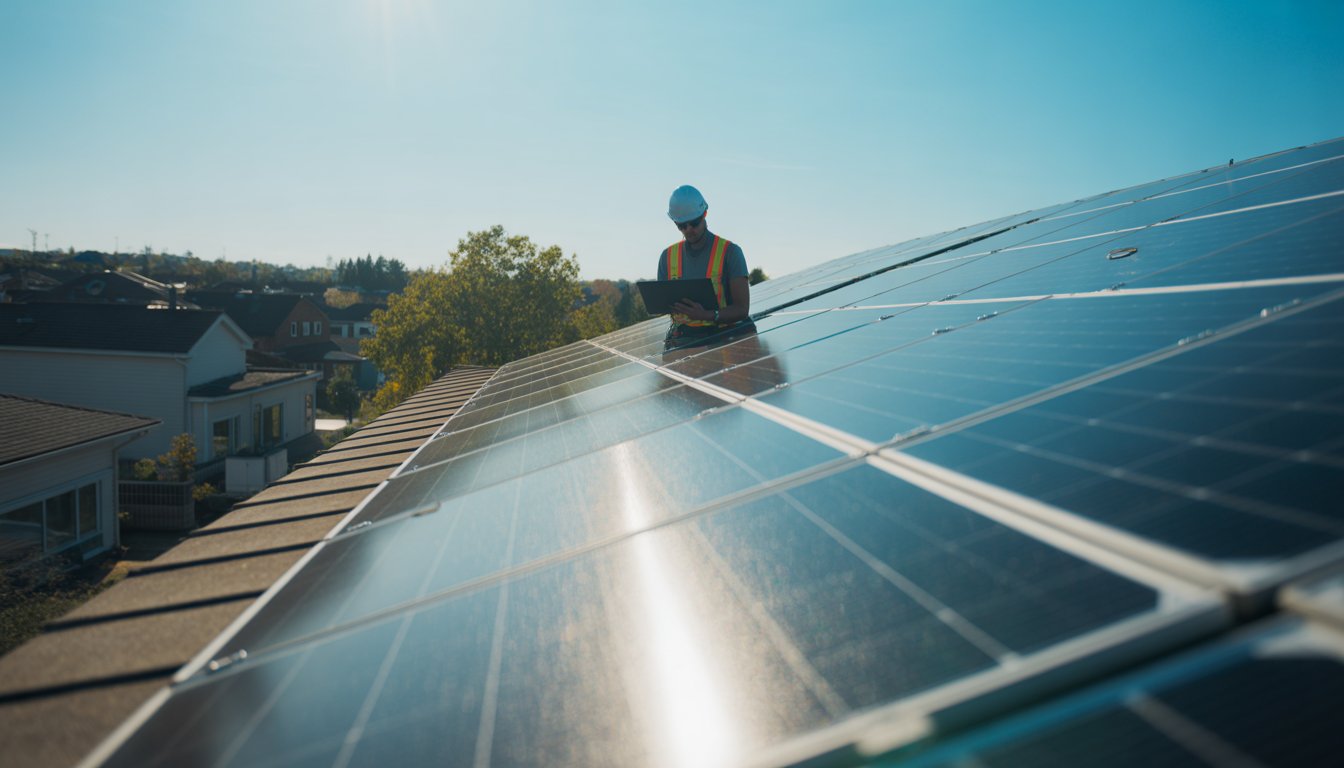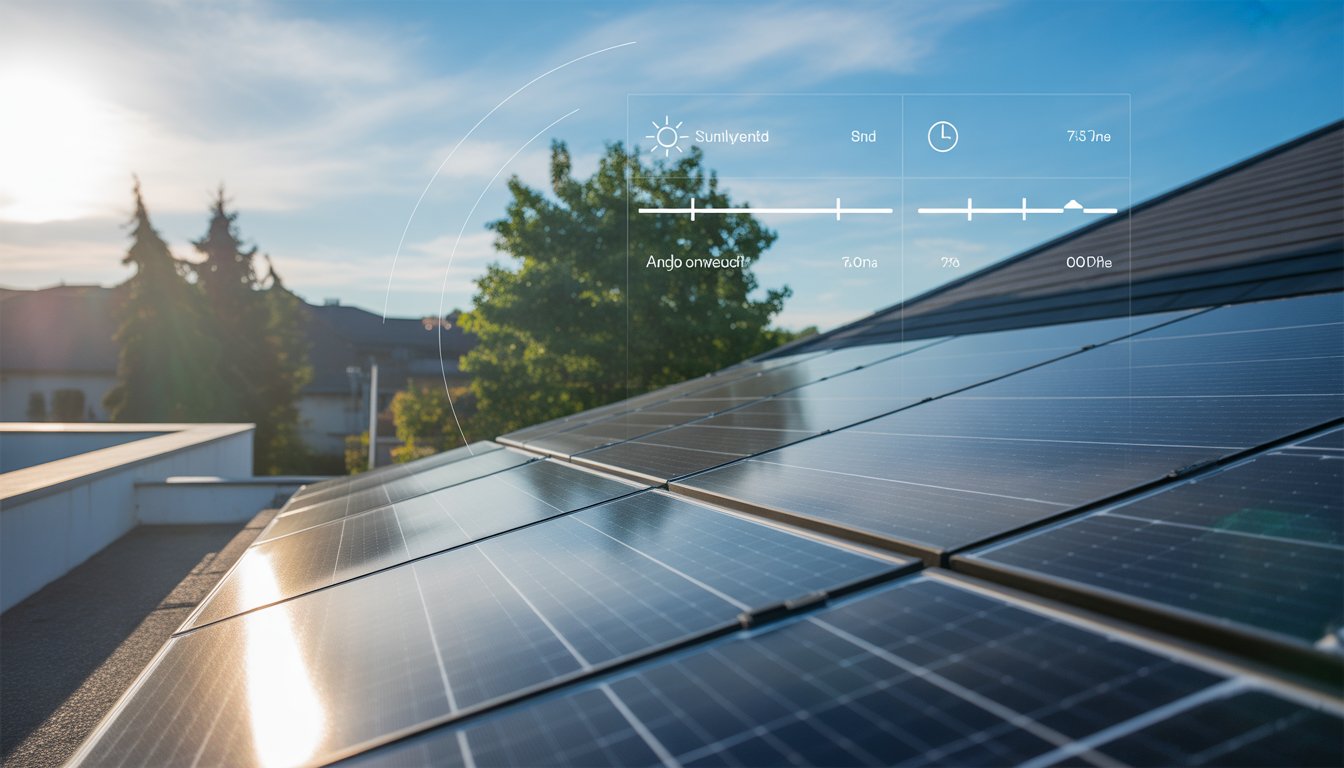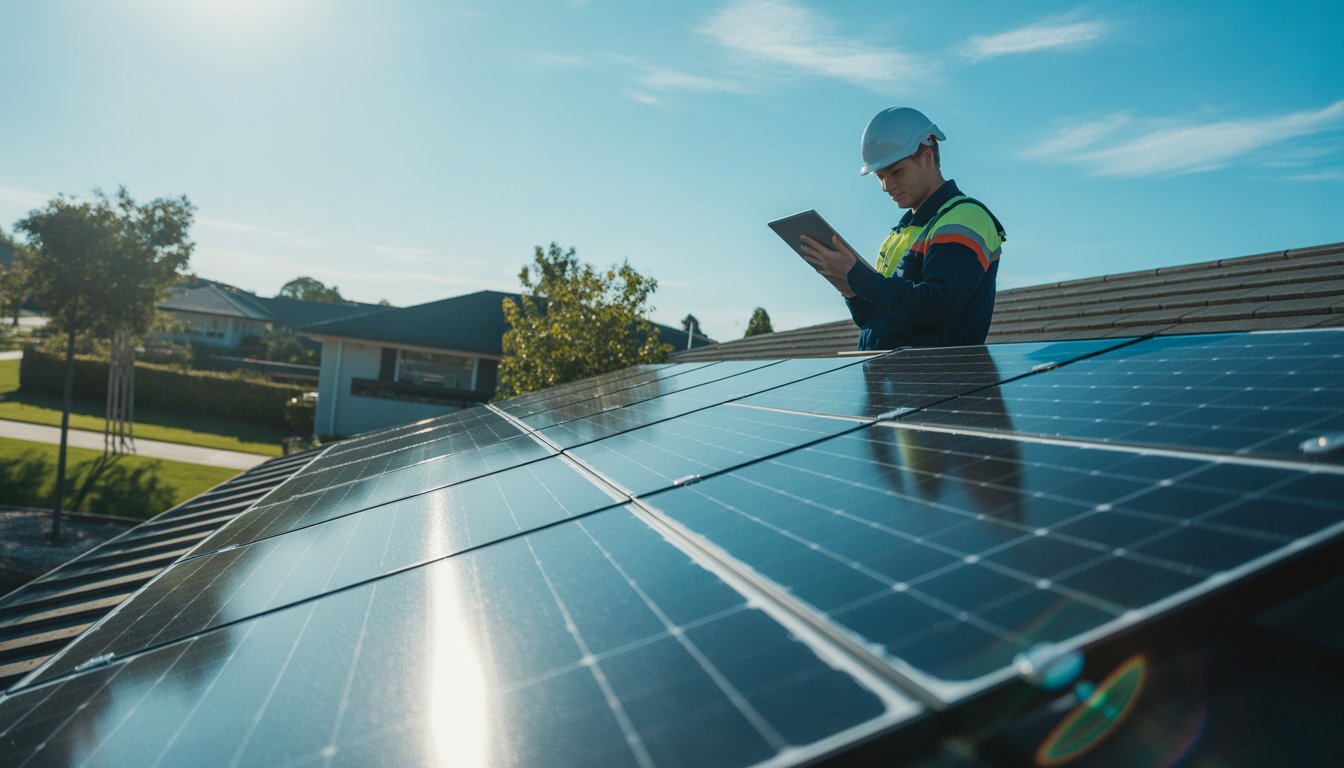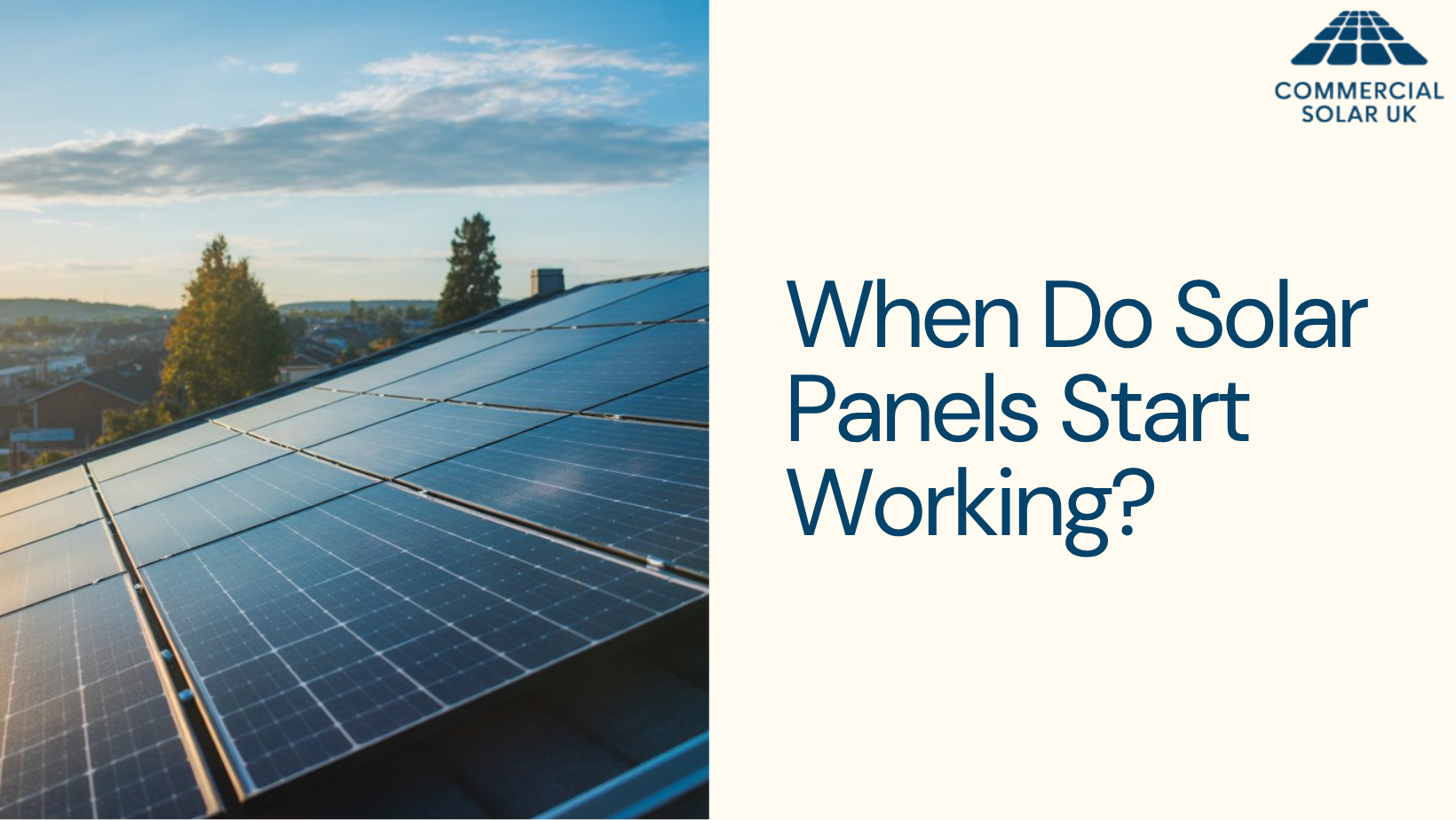When Do Solar Panels Start Working?
Solar panels start working as soon as they receive daylight, which means they begin generating electricity at sunrise. The exact time depends on location, season, and weather conditions, so output usually starts low and increases as sunlight strengthens. Solar panels do not rely on direct sunlight, but their efficiency improves significantly during clear, sunny periods.
The performance of solar panels depends on factors like the angle they face and the presence of clouds or rain, which can reduce but not stop energy production. Therefore, understanding when solar panels activate helps manage expectations about energy flow during different times of the day. Rapid gains are typically seen within days after installation as the system adjusts and operates optimally.
Knowing how quickly solar panels start working also clarifies common misconceptions about their use on cloudy or rainy days. This insight ensures users can better appreciate the dynamics of solar energy generation and plan accordingly. As a result, details about initial operation and efficiency provide practical value for anyone considering or already using solar power.
Key Takeaways
- Solar panels begin generating electricity at sunrise once daylight is available.
- Weather and panel positioning affect how quickly panels reach full efficiency.
- Panels can produce energy even on cloudy days, but output is lower than in direct sunlight.
Understanding How Solar Panels Work

Solar panels generate electricity by converting sunlight through a specific physical process. Their activation depends on several key components that work together to capture and transform solar energy. Defining what it means for a panel to “start working” involves understanding both electrical generation and system readiness.
Photovoltaic Effect Explained
The primary mechanism behind solar panels is the photovoltaic effect, where photons from sunlight knock electrons loose inside PV cells. These cells are made of semiconductor materials like silicon, which produce a flow of electrical current when exposed to light. This means solar panels begin generating direct current (DC) electricity as soon as photons hit their surface.
The amount of electricity depends on light intensity, so panels produce some energy even under low light, such as on cloudy days. However, strong sunlight increases the flow of electrons, enhancing the output of the entire solar array.
Components Involved in Activation
Solar panels alone do not supply usable electricity directly. Their DC output must pass through an inverter, which converts it into alternating current (AC) suitable for home use. An inverter also synchronises electricity with the National Grid (NSP) or local electrical system. This conversion and synchronisation step usually defines when the system officially “starts working.”
The system also includes monitoring devices and safety equipment that engage automatically. Once all components communicate and operate correctly, power can flow reliably from the panels to appliances or the grid.
What Is “Starting to Work” for a Solar Panel?
“Starting to work” varies by context. At dawn, solar panels begin generating electricity when sunlight appears, even if minimal. However, the full system starts working only after the inverter activates and conditions meet safety and technical standards.
This delay can range from seconds to minutes. Initial power may be low but increases steadily as sunlight strengthens. For users, the practical start usually means when solar energy powers loads or exports to the grid consistently, not just when photons begin hitting cells.
Key Factors That Determine When Solar Panels Begin Working

The moment solar panels start producing electricity depends on several factors related to light availability, atmospheric conditions, and location specifics. Understanding how sunlight, time, weather, and geography influence performance helps clarify why solar panels activate at different times and at varying levels of efficiency.
Sunlight Requirements
Solar panels generate electricity only when exposed to daylight because they rely on sunlight to trigger the photovoltaic effect. Electricity production begins right at sunrise, though initial output is low due to weak light angles and diffuse radiation. As sunlight intensity strengthens, panels produce more power, increasing through the morning.
For optimal performance, solar panels require direct or diffuse sunlight, though direct sunlight yields significantly higher electricity. Solar cells still function on cloudy days but at reduced efficiency because cloud cover decreases light intensity. Therefore, the presence of any daylight initiates power generation, but the quality of sunlight defines efficiency.
Time of Day and Seasonal Variation
Solar panels start working at daylight, which varies with the time of year and geographic position. In summer months with longer daylight hours, panels activate earlier, sometimes as early as 4:00 to 5:00 am in northern regions. Conversely, during winter, panels may only begin generating power around 8:00 am due to later sunrise.
The concept of solar noon—when the sun reaches its highest point—is critical because panels attain peak output close to this time. Peak sun hours, the period when sunlight intensity is strongest, typically occur around midday and directly impact total daily energy capture. Seasonal shifts in the sun’s path change these hours, affecting when panels work best.
Weather Conditions and Their Effects
Weather has a direct effect on solar panels’ activation and output level. Overcast skies reduce sunlight reaching the panels, so they start working but at lower power levels. Rain and snow may further decrease efficiency by blocking light or covering the panels temporarily.
Extreme weather events that cause shade or debris accumulation delay effective operation. However, solar panels are designed to be resilient and resume normal function quickly once the weather clears. High humidity or haze also disperses light, which reduces effective irradiance and thus lowers energy generation.
Geographical Location
Latitude and local climate define the solar panel starting time and efficiency due to differences in day length and sun angle. Locations closer to the equator have more consistent sunrise times and higher solar irradiance year-round, allowing earlier and more stable activation daily.
In higher latitudes, sunrise and sunset vary dramatically with seasons, leading to shorter or longer daylight hours. This fluctuation impacts when panels can begin working and the total usable energy collected. Additionally, panel orientation and tilt, influenced by geography, optimize sunlight capture, so misaligned panels may activate later despite sunlight presence.
What Happens on the First Day After Installation?

The first day after solar panel installation involves key actions that activate the solar array and begin its electricity generation. These steps focus on verifying the system’s safety, functionality, and output. Careful assessment ensures the solar panel system operates optimally from the start.
Commissioning the System
Commissioning initiates once the solar panels and related equipment are installed. A technician confirms all electrical connections are secure and compliant with safety standards. This process involves testing the inverter, which converts DC electricity from the solar array into usable AC power.
Additionally, the technician checks the system’s communication links to ensure data on energy production flows correctly to any associated monitoring devices. Commissioning verifies the proper integration of all system components, which is crucial for the solar panel system’s reliability and performance.
First Power Generation—What to Expect
Once commissioned, the solar panel system begins generating electricity as soon as sunlight hits the panels. Initial power output depends on factors such as weather, panel orientation, and shading. It is common for output to fluctuate during the first few hours while the system stabilises.
The system may require a brief period before it produces at full capacity, as the inverter initiates startup protocols. However, the solar array starts converting sunlight into electricity immediately, contributing to reducing reliance on the grid from day one.
Monitoring Initial Output
Monitoring begins as the system starts functioning to ensure the solar array produces within expected ranges. Homeowners or operators typically use web portals or apps connected to the system to track real-time energy generation. Monitoring detects abnormalities early, such as underperformance or faults.
Key indicators include total kilowatt-hours produced, system voltage, and inverter status. Effective monitoring supports timely responses if issues arise and provides clear data on how much electricity the solar panel system is contributing to the property’s energy needs.
Do Solar Panels Work on Cloudy or Rainy Days?
Solar panels begin producing electricity as soon as they detect light, regardless of cloud cover or rain. However, their efficiency shifts notably in varying weather conditions. Understanding the differences in output and the factors that affect performance helps clarify what to expect from solar panels during less sunny periods.
Reduced Output vs. No Output
Solar panels do not stop working on cloudy or rainy days; they continue generating power but at a reduced level. Typically, they produce 10-25% of their normal output when skies are overcast because clouds block a significant portion of direct sunlight.
This reduced output occurs because solar cells rely on visible light photons to generate electricity, and clouds scatter sunlight, lowering the intensity that reaches the panels. Rain itself can improve performance by cleaning dust and dirt from the panel surface, which enhances light absorption once skies clear or remain partly cloudy.
Hence, solar panels deliver electricity even in indirect light conditions, avoiding total power loss during poor weather.
Impact of Shade and Obstructions
Shade and physical obstructions cause more significant drops in solar panel performance than diffuse cloud cover. Partial shading on just one panel or part of a panel reduces the power output drastically because it interrupts solar cell function in that area.
Shadows from trees, buildings, or objects create localized energy loss, often leading to disproportionate drops in the whole system unless optimisers or microinverters are used. Unlike uniform cloud cover, which reduces overall light uniformly, shade can cause erratic output or system shutdown if not mitigated.
Therefore, ensuring panels are free from shading during peak sunlight hours is crucial, as even a small obstruction can hinder panel efficiency substantially.
Comparing Performance—Sunny vs. Overcast
The output difference between sunny and overcast days is marked, determined mainly by light intensity. On a bright sunny day, panels operate at full capacity, converting most sunlight into usable electricity. On overcast days, output decreases to a fraction—10-25% of full power—due to diffused light.
Despite this variation, solar panels still provide a reliable energy source because they use daylight, not heat, as their primary input. Rain can aid by washing away grime, so panels may regain peak performance quicker than expected after bad weather ends.
In summary, solar power generation varies with weather, but panels retain functionality even with grey skies or wet conditions, ensuring continuous, if reduced, energy production.
How Quickly Do Solar Panels Reach Maximum Efficiency?
Solar panels begin generating electricity as soon as sunlight hits their surface, but reaching their peak performance depends on several factors. The time to maximum efficiency varies according to the panel’s temperature, alignment with the sun, and cleanliness. These elements work together to affect the solar panel’s energy output each day.
Panel “Warm-Up” Period
Solar panels do not need extensive warm-up time; they start producing power immediately when exposed to sunlight. However, their efficiency is influenced by temperature, as panels operate optimally around 25°C. If the panel is cooler than this, it may generate power at slightly higher efficiency, while hotter conditions reduce output.
This temperature-dependent efficiency means panels may take some time during the day to stabilise at peak performance after sunrise. Early morning sunlight is weaker, leading to lower initial power generation. By mid-morning, when the sun is stronger and the panels approach their ideal operating temperature, the system reaches maximum efficiency.
Influence of Panel Angle and Orientation
The angle and direction of solar panels strongly affect how quickly they perform at their peak. Panels positioned to face the sun directly can reach peak performance faster because they receive the highest light intensity sooner in the day.
For example, panels tilted to match the latitude of the installation site and oriented true south (in the northern hemisphere) generally achieve maximum output between 10 AM and 2 PM. Misalignment can delay this peak, reducing the panel’s efficiency during key sunlight hours and causing loss in daily energy generation.
Maintenance and Cleaning for Optimal Start
Solar panels that are clean and free from dust or debris reach their highest efficiency more rapidly after sunrise. Dirt, pollen, or bird droppings block sunlight and lower the panel’s energy conversion rate, which means less power at the start and throughout the day.
Regular cleaning maintains clear surfaces for sunlight absorption, enabling panels to reach peak efficiency efficiently. Maintenance also includes checks for shading issues from growing vegetation or new structures, as any shade during early daylight hours can delay maximum power output.
Common Myths About When Solar Panels Start Working
Solar panels begin generating electricity as soon as they receive light, but there are many mistaken beliefs about how and when they operate effectively. Understanding these misconceptions can help clarify their performance in different conditions, seasons, and environments.
Solar Panels Only Work in Summer—True or False?
Solar panels do not only work in summer. They generate electricity whenever there is daylight, regardless of the season. However, output is generally higher in summer due to longer daylight hours and more direct sunlight.
Cloudy days reduce the amount of solar energy produced, but panels still function because they rely on light, not heat, to create electricity. Therefore, solar panels can start working early in the year and continue through autumn and winter, although energy production may be lower.
Solar Panels Require Direct Sun to Start
It is false that solar panels need direct sun to begin generating power. They work on daylight because photovoltaic cells absorb light photons, which convert into electricity. This means solar panels start producing energy even on cloudy or overcast days.
Direct sunlight maximises efficiency, but solar panels still function with diffused light. So, panels can operate effectively under various weather conditions, which extends their usability beyond clear, sunny days.
Solar Panels Don’t Work in Cold Climates
This is a misconception. Cold climates do not prevent solar panels from working; in fact, cooler temperatures can improve solar panel efficiency. High temperatures can cause panels to overheat and reduce their output, so colder weather often means better performance.
What matters most is the presence of light. Snow coverage may temporarily block sunlight, but once it melts or is removed, panels resume generating electricity immediately. Hence, solar energy remains a viable option in cold regions.
Related Topics and Further Reading
Solar panels generate electricity efficiently when exposed to daylight, but managing their output and upkeep requires attention. Understanding system monitoring, maintenance, upgrades, and energy storage can optimise solar power use and extend system longevity.
How to Monitor Solar Panel Performance
Monitoring solar panel performance ensures the system functions correctly and maximises renewable energy output. Most solar installations include monitoring software or websites that report daily and real-time electricity generation, allowing for immediate detection of issues.
Key indicators include power output versus expected production based on sunlight, system voltage, and inverter status. Alerts from monitoring tools notify the user if performance drops significantly, often due to shading, dirt, or component faults. Regular performance checks help maintain high energy conversion efficiency and identify areas needing attention without delay.
Solar Panel Maintenance and Troubleshooting
Solar panels require minimal maintenance but periodic inspection is essential to sustain peak solar power generation. Cleaning panels removes dust and debris that block sunlight, improving efficiency by up to 10-15%. Rainfall may suffice in some regions, yet manual cleaning might be necessary in dusty or polluted environments.
Visual checks include looking for cracks, loose wiring, or damage from weather events. Troubleshooting typically involves verifying inverter operation, cable connections, and ensuring no shading occurs during daylight hours. Prompt repair of faults maintains system reliability and supports consistent renewable energy production.
Upgrading Solar Panel Systems
Upgrading solar panel systems is important as technology advances or energy needs increase. Adding higher-efficiency panels or expanding system size can generate more power, reducing reliance on grid electricity. This is often done during home renovations or when older panels reach the end of their lifespan.
Inverter upgrades improve energy conversion rates and enable smarter energy management features. It is crucial to assess the compatibility of new components with existing equipment to avoid performance losses. Professional evaluation helps in selecting sensible upgrades that align with current and future energy requirements.
Solar Energy Storage and Batteries
Solar energy storage via batteries allows excess solar power generated during the day to be used later, especially at night or during low sunlight periods. This capability boosts self-consumption and reduces grid dependence. Common battery types include lithium-ion and lead-acid, each with different costs and lifespans.
Battery systems require monitoring to manage charge levels, avoid deep discharges, and maintain health. Proper integration between solar panels, inverters, and storage devices ensures smooth energy flow. Using stored solar energy effectively enhances overall system value and provides greater energy independence.
Conclusion
Solar panels start working immediately once they are installed and exposed to sunlight. This means they begin converting solar energy into electricity without delay, although the full system may need a short period to stabilise.
Their efficiency depends greatly on sunlight conditions. On cloudy days, panels still generate power, but at a reduced rate due to limited solar radiation.
Several factors affect the speed and amount of energy produced, such as:
| Factor | Effect |
|---|---|
| Sunlight exposure | Directly increases output |
| Weather conditions | Clouds and rain reduce output |
| Equipment setup | Efficient installation boosts performance |
Solar panels operate from sunrise to sunset but stop producing electricity at night. Therefore, integrating battery storage or grid connection ensures a steady power supply beyond daylight hours.
In summary, solar panels provide electricity almost instantly after installation, but energy generation varies based on environmental and technical factors. This enables users to harness renewable energy effectively with predictable conditions.

